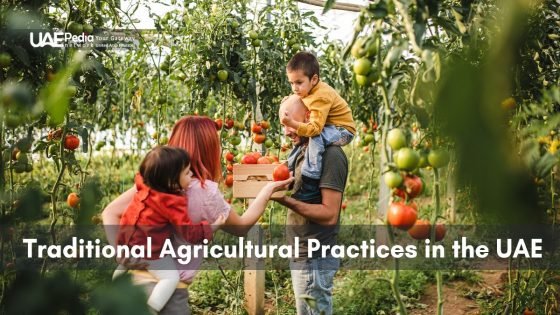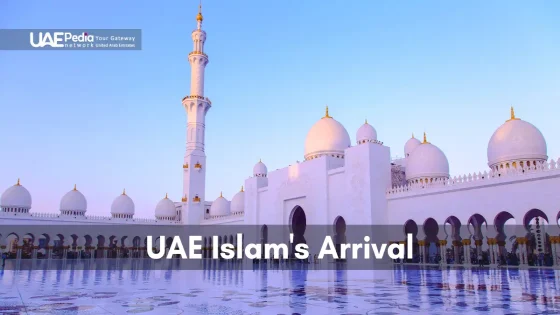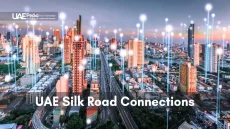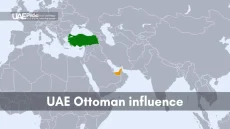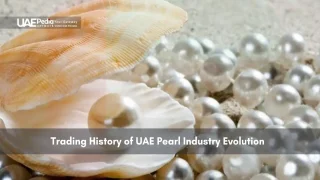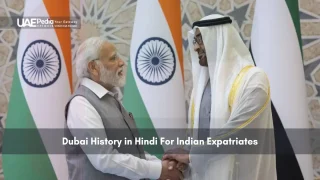Did you know Dubai’s economy once hinged on pearls so valuable they rivaled diamonds in European markets? Long before skyscrapers dotted the skyline, 10th-century Arab geographer Muhammad al-Idrisi mapped a humble settlement called Dibei along the Persian Gulf—a quiet hint of the ambition brewing in this coastal enclave.
By 1590, Venetian jeweler Gasparo Balbi documented over 1,000 pearling boats in the region. For centuries, families here measured wealth not in gold bars but oyster harvests. The creek’s salty waters fed entire generations through fishing and pearl diving—until black gold changed everything.
The 20th-century oil boom transformed this emirate like a desert mirage made real. Sheikh Rashid bin Saeed Al Maktoum’s visionary infrastructure projects—deep ports, modern roads—turned Dubai into a re-export titan. Today, less than 1% of its economy relies on oil. Instead, it thrives as a bridge between East and West, where ancient souks coexist with AI-powered business hubs.
Three things shape our journey ahead:
- How pearl divers’ breath-holding techniques mirror Dubai’s modern risk-taking spirit
- The hidden trade routes that connected this city to Mesopotamia and Indus Valley civilizations
- Why the 1971 UAE federation agreement became the ultimate business pivot
We’ll walk through spice-scented alleyways and glass towers alike, uncovering how a creek-side village became the world’s boldest urban experiment. Ready to trace the sandprints?
Origins as a Trading Port and Early Settlements
Long before malls and metros, Dubai’s coast buzzed with ancient traders bartering copper and dates. Archaeologists digging in Jumeirah found stone tools and pottery shards whispering stories from 7000 BCE—proof that this sun-baked stretch of the Persian Gulf has always been a crossroads.
Archaeological Discoveries and Ancient Influences
Those mangrove swamps you see today? They once hid thriving communities. By 2500 BCE, settlers here mastered date farming and cattle herding—skills borrowed from Mesopotamia. “The Magan civilization didn’t just trade copper,” explains a local historian, “they shared irrigation techniques that turned sand into sustenance.”
Monsoon winds became early highways. Merchants sailed to India’s Indus Valley, returning with spices and textiles. Excavations reveal seashells from Pakistan and ceramics from China—a Bronze Age Amazon of sorts!
Nomadic Roots and the Beginnings of Trade
Life here danced to nature’s rhythm. Tribes followed seasonal rains, moving herds between inland oases and the coast. Date palms provided sugar, vinegar, and rope fibers. When waters shifted, they adapted—building temporary shelters from palm fronds.
By 1000 BCE, this nomadic ingenuity birthed permanent trading posts. The creek became a natural harbor where frankincense from Oman met pearls from Bahrain. Every full moon, fires lit the shore as deals were struck under starry skies—the original Dubai shopping festival.
Evolution Through Centuries and Rulers
What if centuries could whisper through sand? Dubai’s story isn’t just about skyscrapers—it’s etched in clay tablets and monsoon winds. Let’s hop aboard a time-traveling dhow to uncover how leadership, faith, and geography shaped this emirate.
Pre-Islamic Era and Early Civilizations
Long before Islam’s arrival, the Persian Gulf coast thrived with mystery. Ancient caravans carried frankincense through the area, while local tribes traded copper and dried fish. Archaeologists still debate whether 3rd-century settlers here worshipped water deities or desert spirits—the sands guard their secrets well.
Islamic Influence and the Umayyad Period
Everything changed when Umayyad envoys arrived in the 7th century. “Islam didn’t just bring new beliefs,” notes Emirati scholar Ahmed Al-Mansoori, “it connected us to trade networks stretching from Spain to China.” By 1095, records show dhows sailing to Zanzibar loaded with dates and pearls, returning with ivory and spices.
Emergence of Local Leadership and Governance
Power shifted like desert dunes. In 1799, British maps first labeled “Dubai” as a fishing village. But the real game-changer came in 1833: the Al Maktoum family took control, establishing a governance model blending tribal traditions with maritime savvy. Their first decree? Protect the creek—the lifeline that would fuel the city’s future trade empire.
Three threads weave this era together:
- Strategic alliances with neighbors like Abu Dhabi
- Monsoon-dependent trade routes that predated modern shipping lanes
- A leadership style adapting Bedouin values to coastal challenges
Brief History of Dubai: From Pearl Diving to Oil Boom
Imagine diving 100 feet on a single breath, fingers searching oyster beds while sharks circle above. This was daily life for generations before black gold reshaped the Persian Gulf. Pearl divers’ calloused hands built the foundation for today’s gleaming towers—we’re about to see how their legacy ripples through modern skyscrapers.
Economic Shifts from Pearls to Maritime Trade
By 1900, nearly 80% of Dubai’s workforce harvested pearls. Families timed weddings to monsoons—when calm seas meant safer dives. “A perfect pearl could feed a household for months,” recalls Emirati elder Ali Al-Sabah. But Japanese cultured pearls flooded markets in the 1930s, forcing innovation.
Smart pivots saved the economy. Dhows began carrying textiles and spices alongside remaining pearls. The creek became a free trade zone before the term existed—traders paid no taxes, only anchoring fees. This flexibility laid groundwork for today’s Jebel Ali port.
| Era | Key Export | Workforce | Global Partners |
|---|---|---|---|
| 1920s | Natural Pearls | 75% Divers | India, France |
| 1960s | Crude Oil | 60% Oil Sector | UK, USA |
| 2020s | Re-Exports | 33% Trade Jobs | China, Germany |
The Impact of Oil Discovery on Urban Development
1966 changed everything. Dubai struck oil—not as much as Abu Dhabi, but enough. Sheikh Rashid bin Saeed Al Maktoum dredged the creek, creating space for supertankers. British engineers helped build Port Rashid, while local leaders invested oil profits into schools and hospitals.
By 1979, less than 50% of income came from oil. The government wisely diversified—launching Emirates Airlines, expanding free zones, and positioning Dubai as a bridge between East and West. Ancient trade routes now pulse with container ships and fiber-optic cables.
Modern Metropolis: Infrastructure, Free Zones, and Global Trade
Picture a city where robot taxis zip past 3D-printed skyscrapers while AI-powered palm trees offer free Wi-Fi—welcome to Dubai’s playground of the future. This emirate didn’t just adapt to globalization—it rewrote the rulebook. How? By turning sun-baked sands into economic superhighways.
Transformation Through Free Trade Zones and Tourism
The Jebel Ali Free Zone says it all. Launched in 1985, it’s now home to 9,000 companies from 100 countries. “We built cities within the city,” says a government strategist. “Zero taxes, full ownership, and ports linking 150 global destinations—that’s how you lure Microsoft and Samsung.”
Tourism fuels the fire. Burj Khalifa’s LED shows dazzle 16 million visitors yearly, while Palm Jumeirah’s underwater suites sell out at $8,000/night. Yet the real magic? Balancing Bedouin heritage with blockchain hubs. Old souks sell saffron beside startups coding metaverse marketplaces.
Three pillars uphold this economy:
- Jebel Ali Port: Moves 13.5 million containers annually
- Dubai Internet City: Tech HQ for Google and Dell
- Expo 2020 Legacy: $33 billion added to GDP
While Abu Dhabi leans on oil, Dubai bets on brains. Free zones contribute 33% to the United Arab Emirates’ non-oil GDP. Next stop? The Mars Science City—because why limit innovation to one planet?
Final Reflections on Dubai’s Journey
Dubai’s story unfolds like a desert rose—delicate layers of sand and steel revealing timeless grit. From pearl divers’ moonlit dives to oil-fueled leaps into the world’s top financial hub, this city thrives where history shakes hands with holograms.
Look closer: those spice-scented souks and blockchain hubs both owe their pulse to the Persian Gulf. Strategic alliances with Abu Dhabi amplified strengths, while free zones turned sun-scorched dunes into global trade crossroads. Even as oil reshaped the area, leaders bet on brains over barrels—building airports, not just pipelines.
What endures? A knack for reinvention. Bedouin problem-solving fuels AI labs. Ancient trade routes now carry digital currencies. The city’s skyline winks at the world, whispering: “Adapt or evaporate.”
Ready to walk this path yourself? Wander from Al Fahidi’s wind towers to Dubai Frame’s sky-high views. Every corner celebrates how vision—paired with a prime area and Abu Dhabi’s support—can turn creek-side dreams into a city that dares satellites to keep up. Your turn to explore—the future’s already here.
Dubai’s roots as a Persian Gulf trading hub date back centuries, with merchants leveraging its creek for pearl diving, fishing, and regional trade. The 1966 oil discovery accelerated growth, but visionary investments in ports, airports, and free zones like Jebel Ali by Sheikh Rashid bin Saeed Al Maktoum laid the groundwork for today’s diversified economy.
Before oil, pearling fueled Dubai’s economy. Divers risked deep dives for oysters, with pearls shipped to India and Europe. The 1930s collapse of the industry pushed leaders to pivot toward maritime trade and infrastructure—a resilience that shaped Dubai’s adaptive spirit.
The 1971 UAE federation united seven emirates under Sheikh Zayed bin Sultan Al Nahyan and Sheikh Rashid. Shared resources and stability let Dubai balance oil wealth with bold projects—think Burj Al Arab and Dubai International Airport—while preserving its autonomy as a tourism and business leader.
Launched in 1985, Jebel Ali Free Zone offered tax breaks and full foreign ownership, attracting global firms. This model fueled Dubai’s shift from oil dependency to a knowledge-based economy, now replicated in tech hubs like Dubai Internet City and financial centers such as DIFC.
Walk Al Fahidi’s wind-tower houses or cruise the creek on an abra—Dubai balances futuristic skylines with cultural touchstones. Museums like Etihad showcase Bedouin traditions, while festivals like Dubai Shopping Festival blend souks with haute couture, ensuring Emirati identity thrives.

